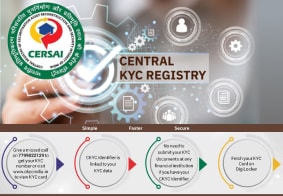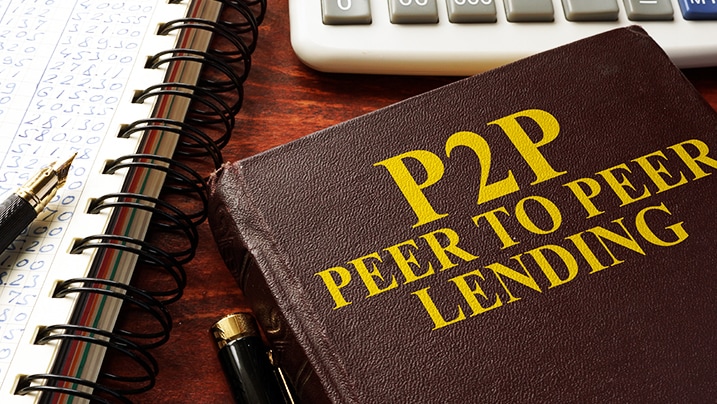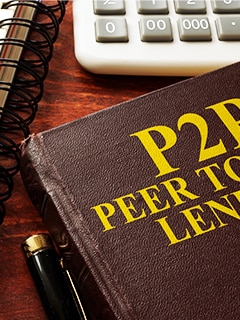CKYC Registry
-
Customer Service Contact us Service request Locate a branch
Find all the help you need
Scan the QR, get our app, and find help on your fingertips

Help CenterSupport topics, Contact us, FAQs and more
-
Login
Are you ready for an upgrade?
Login to the new experience with best features and services
-
Login
Are you ready for an upgrade?
Login to the new experience with best features and services
- Accounts
-
Deposits
IDFC FIRST Bank Deposits
View all Deposits -
Loans
IDFC FIRST Bank Loans
View all Loans - Wealth & Insure
-
Payments
IDFC FIRST Bank Payments
View all Payments -
Cards
IDFC FIRST Bank Cards
View all Cards - Blogs
- Corporate Account
-
Cash Management Services
IDFC FIRST Bank Cash Management Services
View all Cash Management Services - Supply Chain Finance
-
Corporate Lending
IDFC FIRST Bank Lending
View all -
Treasury
IDFC FIRST Bank Treasury
See more details - NBFC Financing
Support topics, Contact us, FAQs and more
- IDFC FIRST Bank Accounts
-
Savings Account
-
Corporate Salary
Account -
Senior Citizens
Savings Account -
First Power
Account -
Current Account
-
NRI Savings
Account -
TASC Institutional
Account -
Savings Account
Interest Calculator
- IDFC FIRST Bank Deposits
-
Fixed Deposit
-
Recurring Deposit
-
NRI Fixed Deposit
-
Safe Deposit Locker
-
FD Calculator
-
RD Calculator
- IDFC FIRST Bank Loans
-
Personal Loan
-
Consumer Durable
Loan -
Home Loan
-
Business Loan
-
Professional Loan
-
Education Loan
-
New Car Loan
-
Pre-owned Car Loan
-
Two Wheeler Loan
-
Pre-owned Two
Wheeler Loan -
Commercial Vehicle
Loan -
Gold Loan
-
Loan Against Property
-
Loan Against Securities
-
Easy Buy EMI card
-
Personal Loan
EMI Calculator -
Education Loan
EMI Calculator -
Home Loan
EMI Calculator
- IDFC FIRST Bank Wealth & Insure
-
FIRST Select
-
FIRST Wealth
-
FIRST Private
-
Mutual Funds
-
Sovereign Gold Bond
-
Demat Account
-
Term Insurance
-
Life Insurance
-
Health Insurance
-
General Insurance
-
Bonds
-
Loan Against
Securities -
Portfolio Management
Service
- IDFC FIRST Bank Payments
-
FASTag
-
Credit Card
Bill Payments -
UPI
-
Funds Transfer
-
Forex Services
-
Pay Loan EMI
- IDFC FIRST Bank Cards
-
Ashva :
Metal Credit Card -
Mayura :
Metal Credit Card -
FIRST Millennia
Credit Card -
FIRST Classic
Credit Card -
FIRST Select
Credit Card -
FIRST Wealth
Credit Card -
FIRST WOW!
Credit Card -
Deals
-
Debit Cards
-
Co-branded Cards
-
Credit Card
EMI Calculator -
FIRST Corporate
Credit Card -
FIRST Purchase
Credit Card -
FIRST Business
Credit Card
- Premium Metal Credit Cards
-
AshvaLifestyle1% Forex₹2,999
-
MayuraLifestyleZero Forex₹5,999
-
FIRST PrivateInvite Only
- Best for travellers
-
MayuraZero ForexMetal₹5,999
-
Ashva1% ForexMetal₹2,999
-
FIRST WOW!Zero ForexTravelLifetime Free
-
FIRST SWYPTravel OffersEMI₹499
-
FIRST Select1.99% ForexLifestyleLifetime Free
-
FIRST Wealth1.5% ForexLifestyleLifetime Free
-
Club VistaraTravelLifestyle₹4,999
-
IndiGo IDFC FIRST Dual Credit CardTravelLifestyle₹4,999
- Max benefits, Free for life
-
FIRST Classic10X RewardsShoppingNever Expiring Rewards
-
FIRST Millennia10X RewardsShoppingNever Expiring Rewards
-
FIRST Select10X RewardsLifestyle1.99% Forex
-
FIRST Wealth10X RewardsLifestyle1.5% Forex
-
FIRST WOW!RewardsTravelZero Forex
-
LIC ClassicRewardsInsuranceShopping
-
LIC SelectRewardsInsuranceShopping
- Reward Multipliers
-
AshvaLifestyleMetal₹2,999
-
MayuraLifestyleZero Forex₹5,999
-
FIRST ClassicNever Expiring RewardsShoppingLifetime Free
-
FIRST MillenniaNever Expiring RewardsShoppingLifetime Free
-
FIRST SelectNever Expiring RewardsLifestyleLifetime Free
-
FIRST WealthNever Expiring RewardsLifestyleLifetime Free
- Rewards & Credit on UPI
-
FIRST Power+FuelUPI₹499
-
FIRST PowerFuelUPI₹199
-
FIRST EA₹NVirtual1% Cashback₹499
-
FIRST DigitalVirtualUPI₹199
-
IndiGo IDFC FIRST Dual Credit CardUPITravelDual cards
- Fuel and Savings
-
FIRST PowerRewardsUPI₹199
-
FIRST Power+RewardsUPI₹499
-
LIC ClassicRewardsInsuranceShopping
-
LIC SelectRewardsInsuranceShopping
- Express and Flaunt
-
AshvaMetal1% Forex₹2,999
-
MayuraMetalZero Forex₹5,999
-
FIRST SWYPEMIOfferMAX₹499
-
FIRST MillenniaRewardsShoppingLifetime Free
- FD Backed rewarding Credit Cards for all
-
FIRST EA₹NVirtualCashback₹499
-
FIRST WOW!Zero ForexTravelLifetime Free
-
CreditPro Balance TransferTransfer & SaveReduce InterestPay Smartly
- IDFC FIRST Bank NRI Forex Solutions
-
Send money to India-Wire transfer
-
Send money to India-Digitally
-
Send money abroad
-
Max Returns FD (INR)
- IDFC FIRST Bank MSME Accounts
-
Platinum Current
Account -
Gold
Current Account -
Silver Plus
Current Account -
Merchant Multiplier
Account -
Agri Multiplier
Account -
TASC Institutional
Account -
Dynamic Current
Account -
World business
Account -
First Startup
Current Account
- IDFC FIRST Bank Business Loans
-
Business Loan
-
Professional Loan
-
Loan Against Property
-
Business Loan for Women
-
Working Capital Loan
-
Construction Equipment Loan
-
Machinery Loan
-
Healthcare Equipment Loan
- IDFC FIRST Bank Business Solutions
-
Payment Solutions
-
Tax Payments
-
Doorstep Banking
-
Point of Sale (POS)
-
Escrow Accounts
-
NACH
-
Payment Gateway
-
UPI
-
Virtual Accounts
-
As per amendment in the Income Tax Rules, PAN or Aadhaar are to be mandatorily quoted for cash deposit or withdrawal aggregating to Rupees twenty lakhs or more in a FY. Please update your PAN or Aadhaar. Kindly reach out to the Bank’s contact center on 1800 10 888 or visit the nearest IDFC FIRST Bank branch for further queries.
-
-
Most Searched
Sorry!
We couldn’t find ‘’ in our website
Here is what you can do :
- Try checking the spelling and search
- Search from below suggestions instead
- Widen your search & try a more generic keyword
Suggested
Get a Credit Card
Enjoy Zero Charges on All Commonly Used Savings Account Services
Open Account Now
Personal Loan
Peer-to-Peer (P2P) Lending: A Complete Guide
Key Takeaways
P2P lending connects individual borrowers with lenders directly, offering higher returns for investors compared to traditional savings accounts, and easier access to credit for those who may not qualify for bank loans.
While P2P lending presents attractive opportunities, it also carries risks, such as the likelihood of borrower defaults, especially since many borrowers may have poor credit histories.
Unlike traditional bank loans, P2P loans are not protected or insured by the government, leaving investors vulnerable if a borrower defaults.
Peer-to-peer lending is the latest innovation in finance, promising investors high returns. But is it worth the risk?
Peer-to-peer lending, or P2P lending, has emerged as a popular alternative to traditional finance methods, offering higher returns for investors and easier access to credit for borrowers. But like any financial product, it carries both risks and rewards. In this article, we’ll examine the ins and outs of P2P lending and help you decide whether it’s a viable option for you, whether you are looking to invest or borrow money.
What is peer-to-peer lending?
Peer-to-peer lending is an innovative financial model that connects individuals who want to lend money with those who need to borrow. Unlike traditional banks, P2P lending platforms serve as intermediaries that facilitate loans directly between individuals.
On many websites, the money that you deposit for peer-to-peer investing is automatically distributed among multiple borrowers. However, on other peer-to-peer lending platforms, you have the option of choosing who you want to lend your money to. (P2P Loan) Peer-to-peer loan interest rates are often greater than those offered by regular savings accounts.
READ MORE
How does peer-to-peer lending function?
Peer-to-peer lending has a simple mechanism. All the operations are completed on a mobile application or website. The following steps outline the general process:
- A prospective borrower fills out an online registration form on the p2p lending platform to apply for a loan.
- The platform evaluates the application and evaluates the applicant's risk as well as credit rating. A suitable interest rate is then applied to the applicant.
- When the registration is authorised, investors on the P2P lending platform provide the applicant with the available options based on his credit rating and allocated interest rates.
- The candidate should consider the various possibilities and select one.
- The candidate is accountable for paying interest regularly and returning the principal amount when the loan matures.
Benefits of P2P Lending
There are several advantages to participating in P2P lending, both for borrowers and investors:
- When compared to other types of investments, P2P lending offers investors higher returns.
- Peer-to-peer lending is a more approachable source of revenue for some borrowers than traditional loans from banking institutions. It could be due to the borrower's poor credit score.
- Because there is more competition among lenders and there are fewer origination fees, P2P loans normally have lower interest rates.
With P2P lending, however, there is always the risk that the borrower would be unable to repay the debt.
Risks Associated with P2P Lending
Peer-to-peer lending does, however, have a few drawbacks, such as:
- Peer-to-peer lending carries a significant risk of default. Many individuals who seek P2P loans have poor credit scores, which prevent them from obtaining a traditional bank loan. As a result, investors must be aware of this risk when investing in a borrower.
- There is no insurance or government security in place. If a borrower defaults, the government does not offer insurance to the lenders.
- Some authorities prohibit peer-to-peer lending or impose investment requirements on enterprises that provide such facilities.
How Is P2P Lending Regulated In India?
Regulation by Reserve Bank of India (RBI)
The Reserve Bank of India (RBI) is the primary regulatory authority overseeing P2P lending platforms. It ensures that these platforms operate under established guidelines to protect both borrowers and lenders, maintain financial stability, and enhance trust in the P2P lending ecosystem.
Regulatory Guidelines for P2P Platforms
RBI has laid down specific guidelines for the functioning of P2P lending platforms, including requirements related to financial stability, such as maintaining a minimum net owned fund, and imposing caps on the amount an individual can lend or borrow.
Operational Guidelines
The operational framework requires that P2P lending platforms function strictly as intermediaries, facilitating the connection between borrowers and lenders without holding any deposits.
KYC and Credit Assessment
To mitigate risks, P2P lending platforms are mandated to adhere to KYC (Know Your Customer) norms, verifying the identities of all lenders and borrowers. In addition, platforms must conduct thorough credit assessments and share relevant information to help lenders make informed decisions.
P2P Lending vs. Traditional Loans
While P2P lending can be an attractive alternative to traditional loans, it’s not always the best option. For instance, if you’re looking for a loan with security and regulatory oversight, a bank loan might be a better choice. Unlike P2P loans, bank loans are often insured and come with consumer protections.
P2P loans are like instant personal loans but without much authorisation. It is best to get a loan from a conventional bank if you need money. IDFC FIRST Bank gives instant personal loans with the major benefits of a P2P loan, but with added security. You can also check you EMI amount with IDFC FIRST Bank’s personal loan EMI calculator. Simply enter your loan amount requirement, period for which you want. The fact that you can get personal loans online proves that bank loans are on equal footing with P2P loans.
Disclaimer
The contents of this article/infographic/picture/video are meant solely for information purposes. The contents are generic in nature and for informational purposes only. It is not a substitute for specific advice in your own circumstances. The information is subject to updation, completion, revision, verification and amendment and the same may change materially. The information is not intended for distribution or use by any person in any jurisdiction where such distribution or use would be contrary to law or regulation or would subject IDFC FIRST Bank or its affiliates to any licensing or registration requirements. IDFC FIRST Bank shall not be responsible for any direct/indirect loss or liability incurred by the reader for taking any financial decisions based on the contents and information mentioned. Please consult your financial advisor before making any financial decision.
Frequently Asked Questions
What is the meaning of a P2P loan?
A P2P loan (peer-to-peer loan) in India is a type of borrowing and lending that happens directly between individuals, without banks or financial institutions getting involved. Instead, online platforms connect borrowers with lenders. The platform serves as the middleman, handling things like verifying the borrower’s credit, setting interest rates, and ensuring the loan terms are followed. P2P loans in India can be used for a variety of reasons, such as covering personal expenses, funding business growth, or consolidating debt.
Is it safe to get a P2P loan?
While P2P lending in India is regulated by the Reserve Bank of India (RBI), like any financial product, there are some risks involved. The safety of a P2P loan depends largely on the platform you choose and the steps you take to protect yourself. Reputable P2P platforms in India must follow strict regulations that ensure transparency, protect your data, and promote fair lending practices. Still, as a borrower, you should always review the platform's terms carefully, check the interest rates, and confirm that it has robust security measures to protect your personal and financial information.
The features, benefits and offers mentioned in the article are applicable as on the day of publication of this blog and is subject to change without notice. The contents herein are also subject to other product specific terms and conditions and any third party terms and conditions, as applicable. Please refer our website www.idfcfirstbank.com for latest updates.























